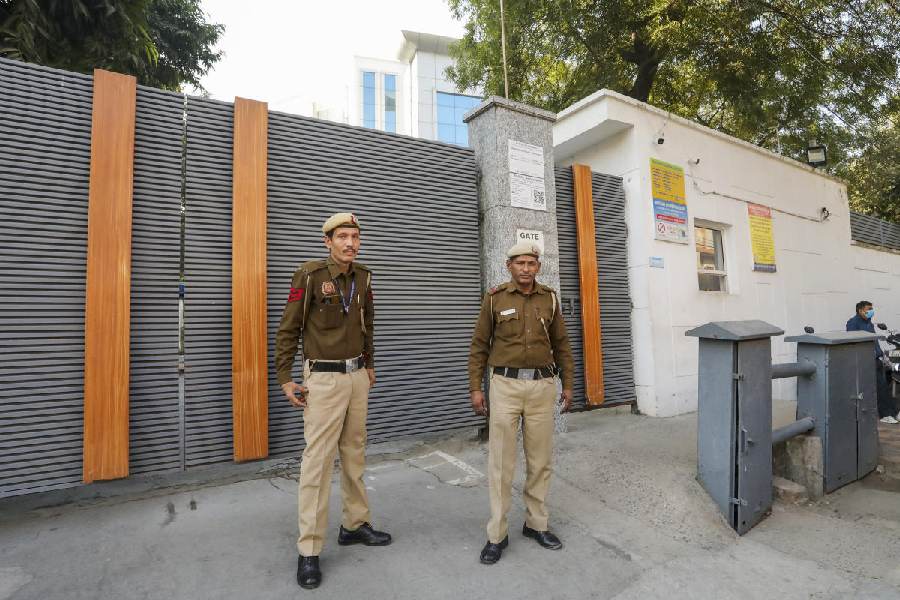
The flight of 142 stairs at Golghar, the iconic granary built by the British in 1786, will soon again take visitors to the top to get a panoramic view of Patna.
The conservation work, on for seven years now, is expected to be complete in about a month.
The state government on Thursday sanctioned an additional Rs 10 lakh the Archaeological Survey of India (ASI) had demanded to complete the monument's conservation work that started on August 11, 2010, and was to be complete within two years.
"We had already paid Rs 98 lakh for the conservation and thought why should the work suffer for a small amount of money," state archaeology director Atul Kumar Verma told The Telegraph .
The ASI has been waiting for the money for the past five months and its Patna circle superintending archaeologist D.N. Sinha said his men would be able to finish the work within a month of getting the money sanctioned by the state government.
"Applying a coat of plaster on the outer surface of Golghar as well as repair of the staircases on its two sides comprise the pending work," said Sinha.
He added that the plan was to start repairing the stairs from top to down. Once everything is finished, the scaffolding put around the monument would be removed and Golghar would be handed back to the state government.
Asked about the five-year delay in completion of the conservation work, Sinha said: "We should rejoice that the work is nearing completion."
However, sources said apart from funds crunch, the work also suffered because of difficulty in putting scaffolding inside the dome-shaped monument to conduct repairs on its inner wall. The low level of oxygen inside the granary was also one of the factors. However, pumping in of fresh air solved the issue.
After an estimated 1 crore people were killed in the lower Gangetic plain, including Bihar and Bengal, in the Great Bengal Famine of 1770, then governor-general Warren Hastings gave directions for the construction of Golghar to support famine-stricken people.
East India Company engineer John Garstin started its construction on January 20, 1784 and completed it on July 20, 1786. It was built with bricks, surkhi chuna (lime and powdered burnt red terracotta) plaster.
Foodgrains were to be stored inside the granary by carrying it to the top via stairs and dropping it inside through a two-and-a-half feet hole. However, grains could not be stored in the 96ft-tall stupa-like building owing to an inherent defect. Its doors opened inside, and grains poured inside would prevent their opening.
Golghar had developed structural defects and stresses, including longitudinal cracks, salt action on its walls and waterlogging around its foundation, which experts had attributed to thousands of daily visitors and the effect of traffic .
The monument is protected under the Bihar Ancient Monuments and Archaeological Sites Remains Act, 1976, and the state government had engaged the ASI for its conservation and renovation.










